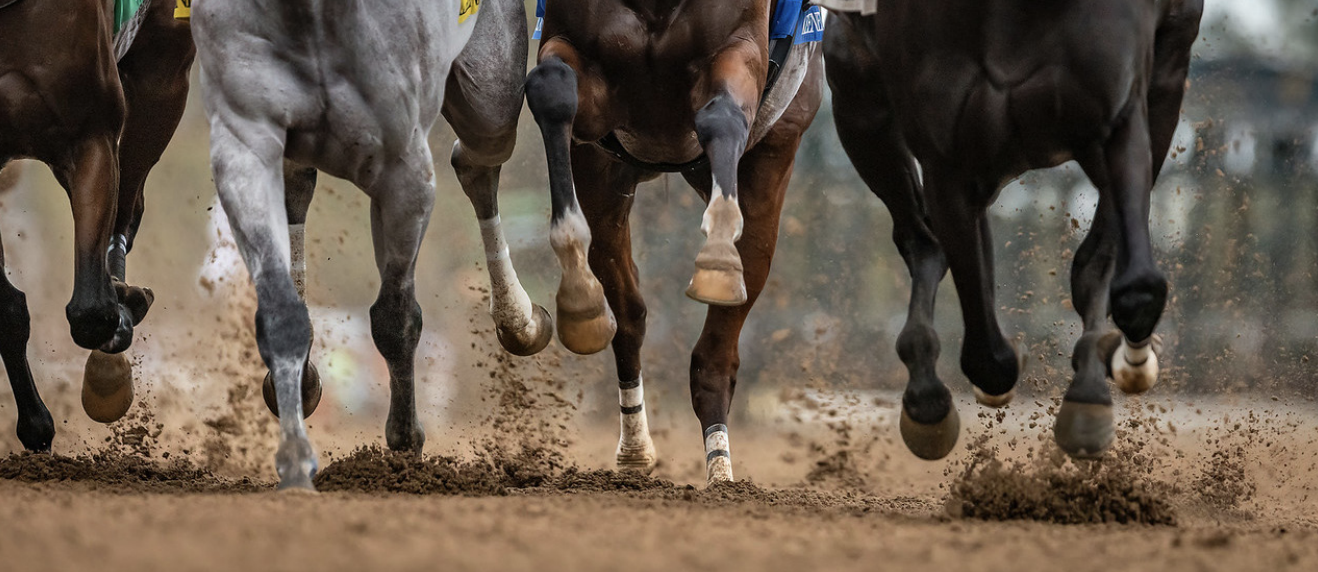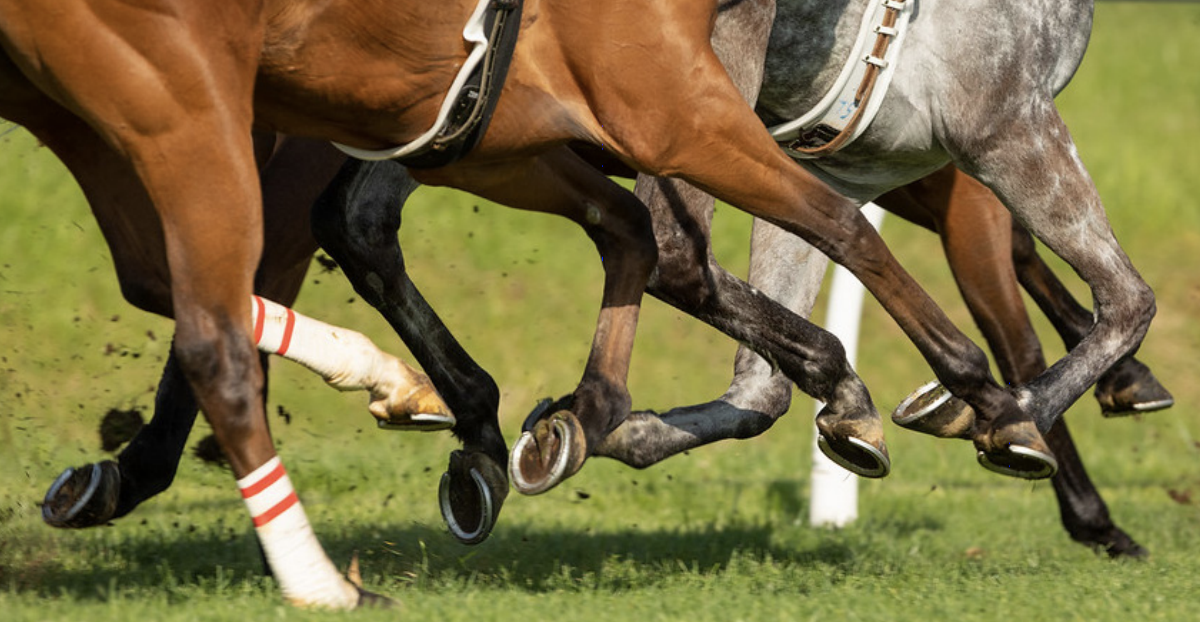Promising developments in quest to prevent catastrophic racehorse injuries; UK study shows association between mRNA biomarkers and catastrophic injuries in Thoroughbred racehorses

Catastrophic injuries in Thoroughbred racehorses is a topof-mind concern for the racing industry and for its fans. That sentiment is shared by researchers at the University of Kentucky, who are working to learn more about the changes happening at a cellular level that might indicate an injury is present before it becomes career or life ending.
Might it be possible to identify an early marker or signal for horses at risk of catastrophic injury, allowing for intervention before those injuries happen? And, if yes, might this type of detection system be one that could be implemented cost effectively on a large scale?
According to Allen Page, DVM, PhD, staff scientist and veterinarian at UK’s Gluck Equine Research Center, the short answer to both questions is that it looks promising.
For the past three years, Page, along with UK colleagues, has been analyzing blood samples from more than 1,000 Thoroughbred racehorses. The samples, collected by participating racing jurisdictions from across the country, have come from both catastrophically injured and non-injured horses in a quest to better understand changes that might be happening at the cellular level during racing and if there are any molecular red flags which consistently differentiate horses that suffer a catastrophic injury.
An abstract of this research will be presented at the American Association of Equine Practitioners’ annual meeting in December and more information about the study’s findings will be shared this fall.
“We are definitely encouraged by our findings,” Page said. “The ultimate hope is, of course, to develop a screening tool that can be used pre-race to identify horses at increased risk for injury. The results of this study suggest that analysis of messenger RNA expression could be an economical, effective and noninvasive way to identify individual racehorses at risk for catastrophic injury.”
This study, as well as a follow up study beginning this month, has been entirely funded by the Kentucky Horse Racing Commission’s Equine Drug Research Council.
“It is hard to overstate how much we appreciate the continued support of the KHRC and the Equine Drug Research Council. Their willingness to fund these projects is really a testament to their interest in supporting innovative ideas geared towards improving the safety and wellbeing of horses and riders,” Page said.
David Horohov, PhD, chair of the Department of Veterinary Science, director of the Gluck Center and Jes E. and Clementine M. Schlaikjer Endowed Chair, echoed those sentiments, “I am pleased that the EDRC is able to continue to provide support for this important study and that Dr. Page is able to continue his work on finding ways to protect our equine athletes.”
Joining Page in the research from UK’s Gluck Center are Emma Adam, DVM, PhD, DACVIM, DACVS, assistant professor, research and industry liaison, Horohov, James MacLeod, VMD, PhD, John S. and Elizabeth A. Knight chair, director of UK Ag Equine Programs and professorof veterinary science and Ted Kalbfleisch, PhD, associate professor.

Previous research has shown that many catastrophic injuries occur in limbs with underlying and pre-existing damage, leading to the theory that these injuries occur when damage accumulation exceeds the healing capacity of the affected bones over time. Since many of these injuries have underlying damage, it is likely that there are molecular markers of this that can be detected prior to an injury.
The identification of protein biomarkers for these types of injuries had been explored in previous research, albeit with limited success. The focus of this project, measuring messenger RNA, had not yet been explored, however. The overall objective was to determine if horses that had suffered a catastrophic injury during racing would show increased inflammatory mRNA expression at the time of their injury when compared to similar horses who were not injured. It turns out that this theory might be on to something.
Messenger RNA (mRNA) is a single-stranded RNA molecule that is generated from DNA through the process of transcription. This mRNA carries the genetic information specifying a particular amino acid sequence, which can then be used to create a protein through the process of translation. While work lookingat inflammation often involves measuring proteins, Page and his collaborators opted to focus on mRNA due to the limited availability of reagents available to measure horse proteins and concerns about how limited the scope of that research focus would be. Focusing on mRNA expression, however, is not without issues.
According to Page, mRNA can be extremely difficult to work with. “A normal blood sample from a horse requires a collection tube that every veterinarian has with them. Unfortunately, we can’t use those tubes because mRNA is rapidly broken down once cells in tubes begin to die. Luckily, there are commercially-available blood tubes that are designed solely for the collection of mRNA,” he said.
“One of the early concerns people had about this project when we talked with them was whether we were going to try to link catastrophic injuries to the presence or absence of certain genes and familial lines. Not only was that not a goal of the study, the samples we obtain make that impossible” Page said. “Likewise for testing study samples for drugs. The tubes do an excellent job of stabilizing mRNA at the expense of everything else in the blood sample.”
Horses eligible for inclusion in this study were Thoroughbreds entered into any race in one of five participating jurisdictions from September 2017 to June 2020. To look at the mRNA, these jurisdictions collected specific blood samples either pre-race or post-race from a selection of non-injured horses or immediately from a horse after a catastrophic injury. Once collected, samples were sent in batches to the Gluck Center where they were analyzed using quantitative PCR (qPCR). The names and category (injured, pre-race or post-race) of sampled horses were kept from the researchers by participating jurisdictions until the samples had been fully analyzed.
Once the names and dates of samples were revealed, public records were used to learn more about each horse. Information examined included the horse’s sex, age, race type and whether noninjured horses raced again within three months of the sampled race. For horses who had been injured, more information about the race itself was gathered to determine if there were other factors related to the injury. Additionally, necropsy results, when available, were used to categorize the type of musculoskeletal injury that occurred.
“As of right now, there are four mRNA markers, out of the 23 we have measured with qPCR, that show some significant promise as markers for identifying horses at risk of a catastrophic injury. Obviously, there has been an impact of COVID-19 on our research, so there are still a few more samples to process and add to our data analysis. Once we do that, we plan to submit the findings for publication. Currently, we’re targeting the end of the year to be able to share exactly what we have found so far” Page said.
Holly Wiemers, MA, APR, is the communications and managing director of UK Ag Equine Programs.
